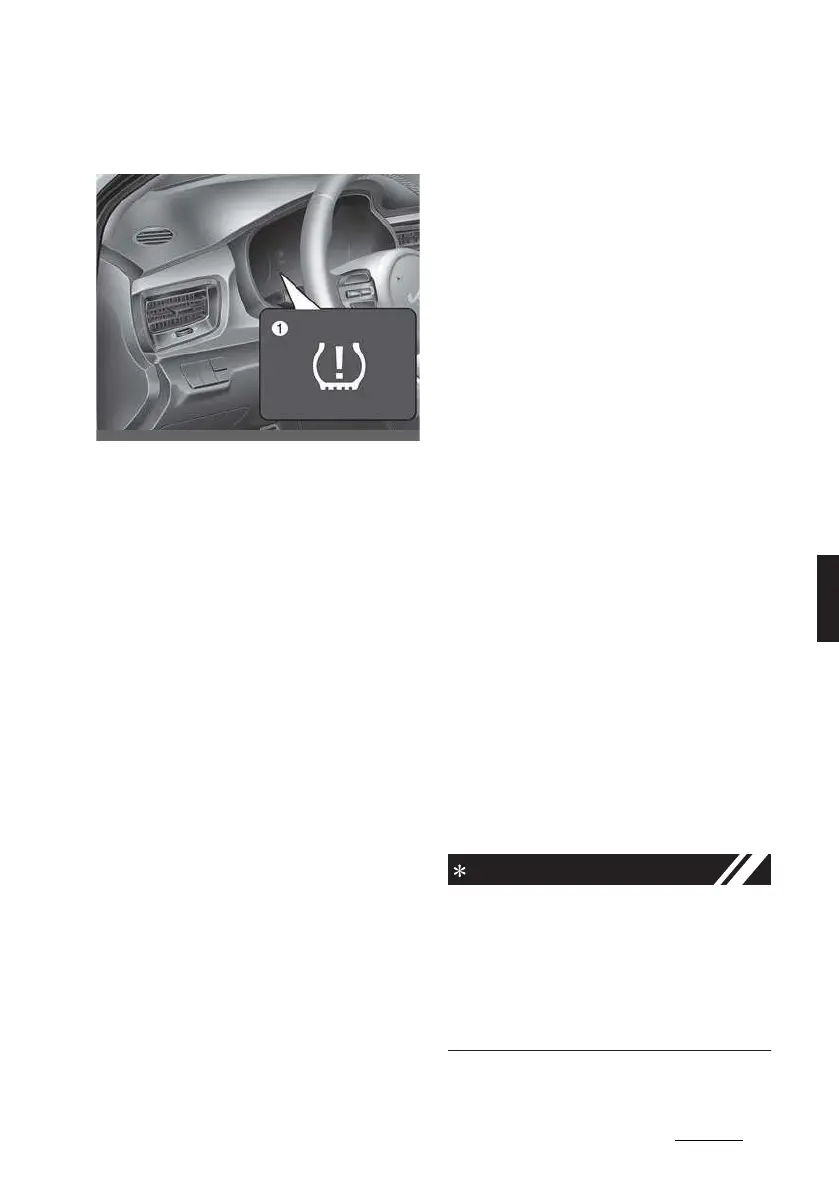7
6
6
What to do in an emergency Tire Pressure Monitoring System (TPMS – Type A)
Tire Pressure Monitoring Sys
-
tem (TPMS – Type A)
1. Low tire pressure telltale/TPMS mal
-
function indicator
Each tire, including the spare (if pro
-
vided), should be checked monthly
when cold and inflated to the inflation
pressure recommended by the vehicle
manufacturer on the vehicle placard or
tire inflation pressure label. (If your vehi
-
cle has tires of a different size than the
size indicated on the vehicle placard or
tire inflation pressure label, you should
determine the proper tire inflation pres
-
sure for those tires.)
As an added safety feature, your vehicle
has been equipped with a tire pressure
monitoring system (TPMS) that illumi
-
nates a low tire pressure telltale when
one or more of your tires is significantly
under-inflated. Accordingly, when the
low tire pressure telltale illuminates, you
should stop and check your tires as soon
as possible, and inflate them to the
proper pressure. Driving on a signifi
-
cantly under-inflated tire causes the tire
to overheat and can lead to tire failure.
Under-inflation also reduces fuel effi
-
ciency and tire tread life, and may affect
the vehicle’s handling and stopping abil
-
ity.
Please note that the TPMS is not a sub
-
stitute for proper tire maintenance, and
it is the driver’s responsibility to maintain
correct tire pressure, even if under-infla
-
tion has not reached the level to trigger
illumination of the TPMS low tire pres
-
sure telltale.
Your vehicle has also been equipped
with a TPMS malfunction indicator to
indicate when the system is not operat
-
ing properly.The TPMS malfunction indi
-
cator is combined with the low tire
pressure telltale. When the system
detects a malfunction, the telltale will
flash for approximately one minute and
then remain continuously illuminated.
This sequence will continue upon subse
-
quent vehicle start-ups as long as the
malfunction exists. When the malfunc
-
tion indicator is illuminated, the system
may not be able to detect or signal low
tire pressure as intended. TPMS mal
-
functions may occur for a variety of rea
-
sons, including the installation of
replacement or alternate tires or wheels
on the vehicle that prevent the TPMS
from functioning properly. Always check
the TPMS malfunction telltale after
replacing one or more tires or wheels on
your vehicle to ensure that the replace
-
ment or alternate tires and wheels allow
the TPMS to continue to function prop
-
erly.
If the TPMS indicator does not illuminate
for 3 seconds when the ignition switch is
turned to the ON position or engine is
running, or if it comes on after blinking
for approximately one minute, take your
car to your nearest authorized Kia dealer
and have the system checked.

